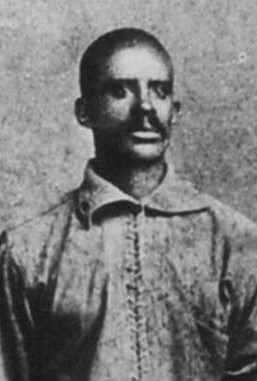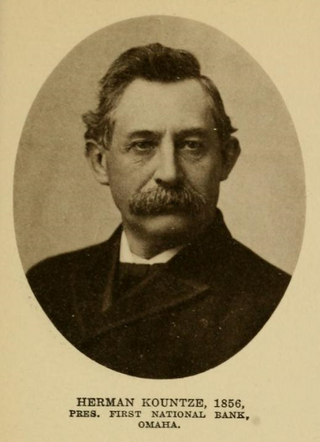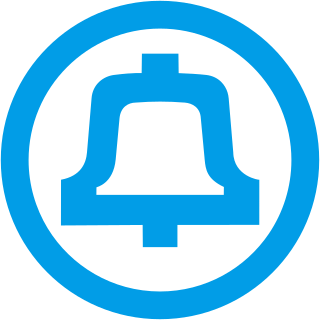
A Regional Bell Operating Company (RBOC) was a corporate entity created as result of the antitrust lawsuit by the U.S. Department of Justice against the American Telephone and Telegraph Company (AT&T) in 1974 and settled in the Modification of Final Judgment on January 8, 1982.

Scouting in Nebraska has a long history, from the 1910s to the present day, serving thousands of youth in programs that suit the environment in which they live.
US West, Inc., doing business as U S West, was one of seven Regional Bell Operating Companies, created in 1983 under the Modification of Final Judgement, a case related to the antitrust breakup of AT&T. US West provided local telephone and intraLATA long-distance services, data transmission services, cable television services, wireless communications services and related telecommunications products to defined areas in Arizona, Colorado, Idaho, Iowa, Minnesota, Montana, Nebraska, New Mexico, North Dakota, Oregon, South Dakota, Utah, Washington, and Wyoming. US West was a public company traded on the New York Stock Exchange under the ticker symbol "USW" with headquarters at 1801 California Street in Denver, Colorado.

The Omaha World-Herald is a daily newspaper in the midwestern United States, the primary newspaper of the Omaha-Council Bluffs metropolitan area.

The Chicago, St. Paul, Minneapolis and Omaha Railway or Omaha Road was a railroad in the U.S. states of Nebraska, Iowa, Minnesota, Wisconsin and South Dakota. It was incorporated in 1880 as a consolidation of the Chicago, St. Paul and Minneapolis Railway and the North Wisconsin Railway. The Chicago and North Western Railway (C&NW) gained control in 1882. The C&NW leased the Omaha Road in 1957 and merged the company into itself in 1972. Portions of the C. St. P. M. and O. are part of the Union Pacific Railroad network. This includes main lines from Wyeville, Wisconsin, to St. Paul, Minnesota, and St. Paul to Sioux City, Iowa.
Qwest Corporation is a Regional Bell Operating Company owned by Lumen Technologies. It was formerly named U S WEST Communications, Inc. from 1991 to 2000, and also formerly named Mountain States Telephone and Telegraph Company, known as Mountain Bell from 1911 to 1991. It includes the former operations of Malheur Bell, Northwestern Bell and Pacific Northwest Bell as well.

Bud Fowler, born "John W. Jackson", was an American baseball player, manager, and club organizer. He is the earliest known African-American player in organized professional baseball. He was elected to the Baseball Hall of Fame in 2022.

Herman Kountze was a powerful and influential pioneer banker in Omaha, Nebraska, during the late 19th century. After organizing the Kountze Brothers Bank in 1857 as the second bank in Omaha, Herman and his brothers Augustus, Charles and Luther changed the charter in 1863, opening the First National Bank of Omaha that year. Kountze was involved in a number of influential ventures around Omaha, including the development of the Omaha Stockyards and the Trans-Mississippi and International Exposition of 1898. Immediately after his death Kountze was regarded as one of Omaha's "old settlers". Today Kountze's First National Bank is the oldest bank west of the Mississippi River, and continues as a privately held company in its sixth generation of family ownership.
Augustus Kountze was an American businessman based in Omaha, Nebraska, Kountze, Texas and New York City. He founded a late 19th-century national banking dynasty along with his brothers Charles, Herman and Luther.

The AT&T Building is a 265 ft, 16-story skyscraper in Downtown Omaha, Nebraska, United States. It was the tallest structure in downtown Omaha until the Woodmen Tower and later First National Bank Tower surpassed it in height. The original 15 story building was built in 1918, a twelve-story addition was added on the north end in 1957 and another on the west end in 1964. An additional story was added in 1970 to bring it to sixteen stories. It was home to The Northwestern Bell headquarters until 1991 when US West merged its three Bell Operating Companies. The building is now used for Lumen's Omaha operations.
The Humeston and Shenandoah Railway was part of a collection of railroad lines built as a westward extension to the Missouri, Iowa, and Nebraska Railway across southern Iowa, US, in the last half of the 19th century. These lines were later exclusively operated, during the 20th century, by the Burlington Route. The Humeston and Shenandoah were originally envisioned as part of a strategy to allow Jay Gould and his Wabash Railroad to reach Omaha, Nebraska. The line's construction was contested, however, by the Burlington Route, and eventually Gould compromised and allowed the H&S Railroad to be built as a joint initiative with the Burlington. Upon completion of construction, the H&S line was leased for operation to a company owned jointly by the Wabash and the Burlington on April 1, 1881, and operated for their joint accounts. This arrangement continued until the Wabash bankruptcy of 1899, after which the line was operated by the Burlington Route under lease.
William A. Paxton was an American pioneer businessman and politician in Omaha, Nebraska. His life as a rancher and cattleman early in his life, as well as early work with the Union Pacific Railroad was highly regarded among his contemporaries; his success as a businessman later in his life led him to great wealth. His leadership is seen as an essential factor in Omaha becoming a prominent stockyards and meatpacking center. He is frequently referred to as "the real founder of South Omaha."

Children's Nebraska is a non-profit regional pediatric specialty health care center located in Omaha, Nebraska. The 243-bed hospital is the only free-standing children's hospital in Nebraska and serves patients from throughout its home state, western Iowa, South Dakota, northern Kansas and northwestern Missouri. The hospital provides more than 50 pediatric specialty clinics for a variety of specialized needs including asthma, cardiology, neurology, pediatric cancer, neonatal intensive care follow-up, diabetes, and physical, occupational, and speech therapies. The hospital also offers the Carolyn Scott Rainbow House, a home-away-from-home for families of patients.

The Bell System was a system of telecommunication companies, led by the Bell Telephone Company and later by the American Telephone and Telegraph Company (AT&T), that dominated the telephone services industry in North America for over 100 years from its creation in 1877 until its antitrust breakup in 1983. The system of companies was often colloquially called Ma Bell, as it held a vertical monopoly over telecommunication products and services in most areas of the United States and Canada. At the time of the breakup of the Bell System in the early 1980s, it had assets of $150 billion and employed over one million people.
Lumen Technologies, Inc. is an American telecommunications company headquartered in Monroe, Louisiana, that offers communications, network services, security, cloud solutions, voice, and managed services. The company is a member of the Fortune 500 and has been on the S&P 500 index since 1999.

The Northwestern Bell Telephone Company Regional Headquarters building in Omaha, Nebraska was built in 1957 as the headquarters of Northwestern Bell, the telephone company that served Nebraska, Iowa, South Dakota, Minnesota, and North Dakota. The building was listed on the National Register of Historic Places in 2009 for its architectural significance as a modern corporate office building in Omaha, as well as Omaha's status as a regional center of communication and commerce at the time.












